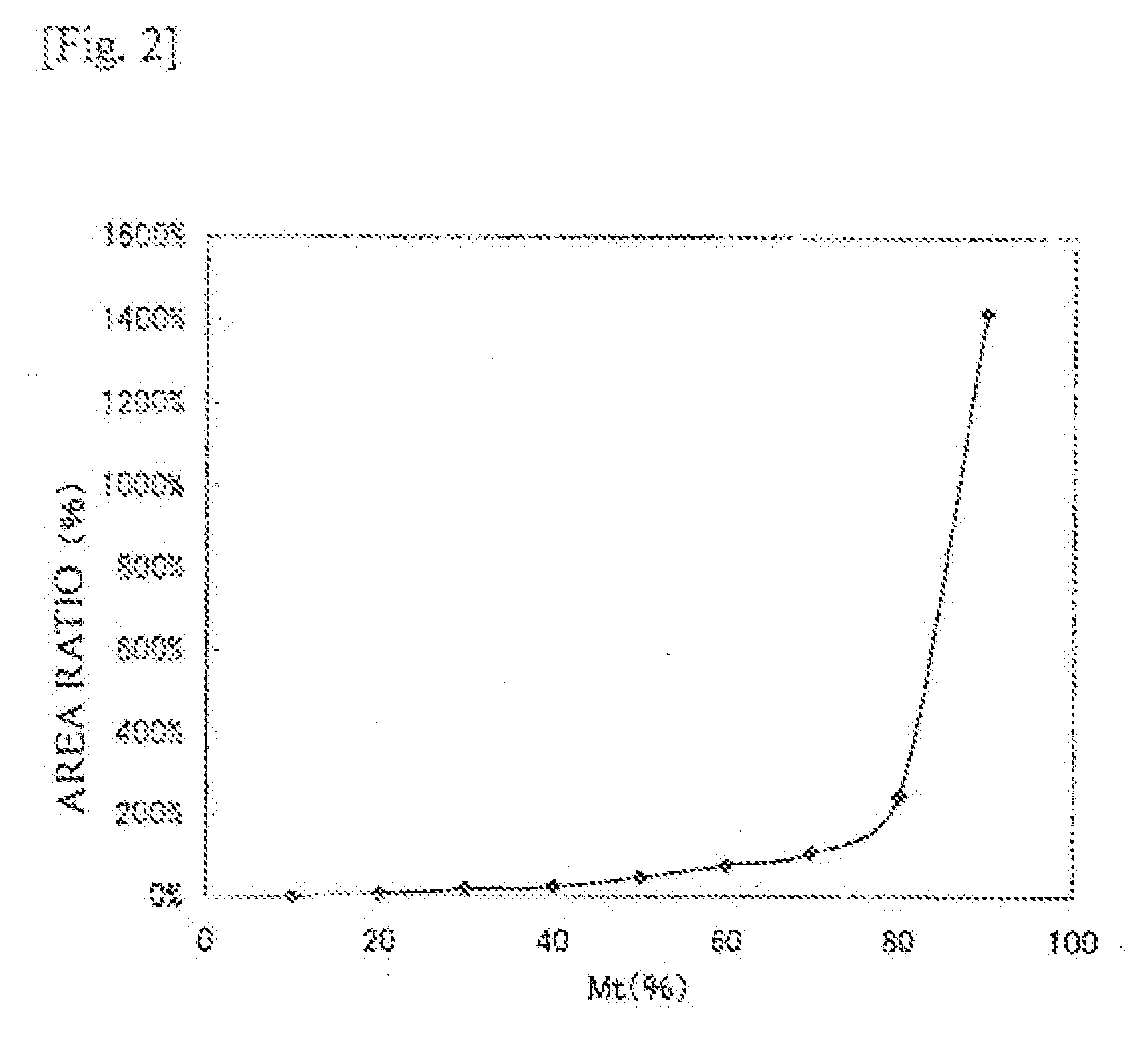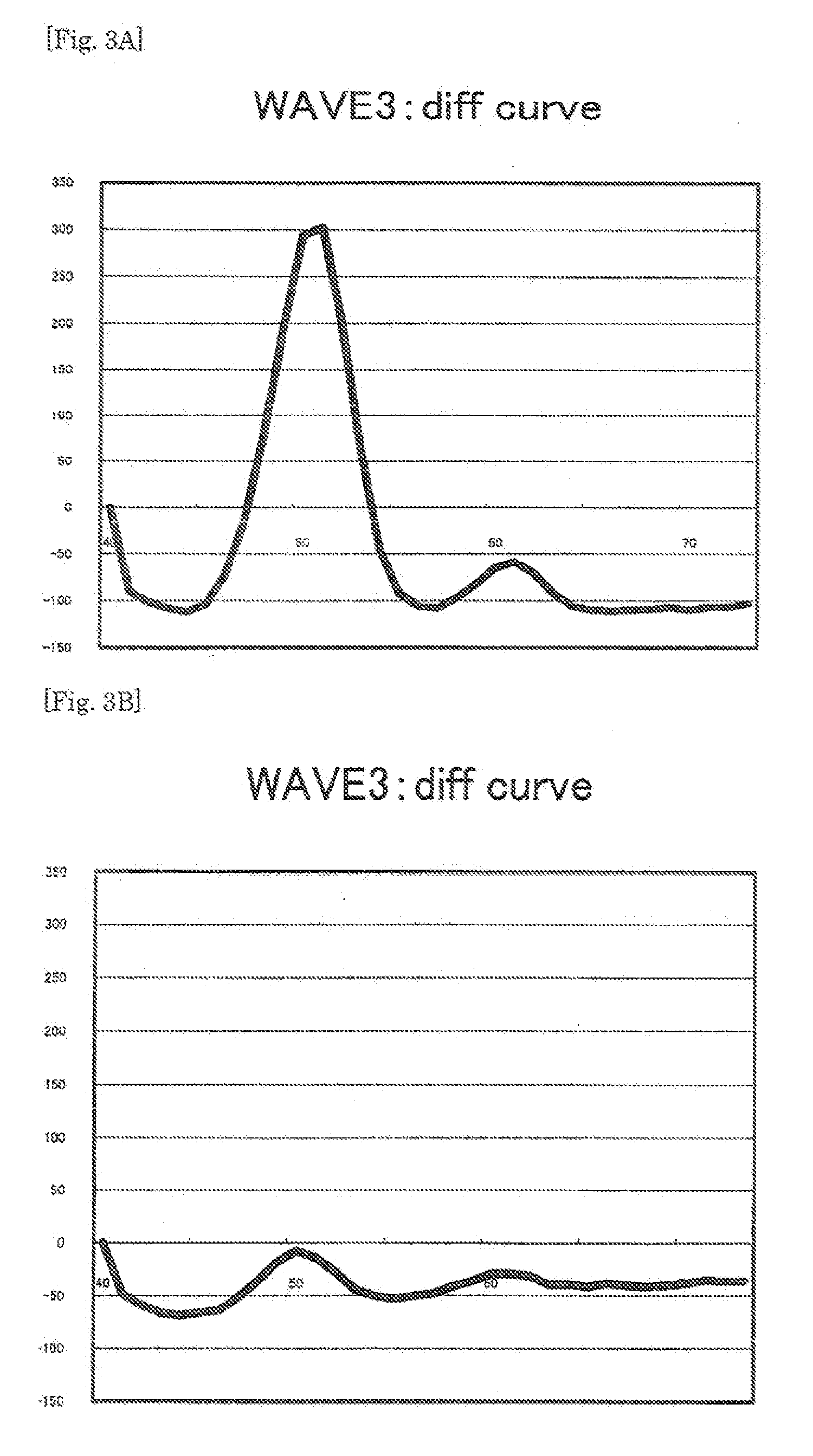Probe for Detection of Polymorphism in ABL Gene, and Use Thereof
a polymorphism and gene technology, applied in the field of probes for detecting polymorphisms in abl genes, can solve the problems of difficult automation, laborious experimental operation, resistance to imatinib, etc., and achieve the effects of high sensitivity, high sensitivity, and high sensitivity
- Summary
- Abstract
- Description
- Claims
- Application Information
AI Technical Summary
Benefits of technology
Problems solved by technology
Method used
Image
Examples
example 1
[0214]
Detection probe P1SEQ ID NO: 95′-cctgtggatgCagtttttc-(TAMRA)-3′
example 2
Point Mutation (T→C) at Nucleotide Position 757 in ab1 Gene
[0219]By using the probe of the present invention, PCR and Tm analysis were carried out for the point mutation (T→C) at nucleotide position 757 in the ab1 gene using a fully automatic SNPs testing device (trade name: i-densy (trademark), manufactured by ARKRAY, Inc.).
[0220]A plasmid in which the normal ab1 gene sequence (SEQ ID NO:3) having no mutation for T at nucleotide position 135 shown in SEQ ID NO:3 was inserted (wtDNA), and a plasmid in which the mutant ab1 gene (ab1 tyrosine kinase T757C(Y2531); SEQ ID NO:4) having the mutation from T to C at the nucleotide position 135 was inserted (mtDNA) were mixed together at a predetermined ratio (mtDNA:wtDNA=100 copies:900 copies) (10% mutation content), and the resulting mixture was diluted to 1000 copies / μL, to provide a template nucleic acid to be used for the reaction. The detection probe P2 was evaluated also for mutation contents of 20% and 0%. The reaction solution was f...
example 2-1
[0221]
Detection probe P2SEQ ID NO: 105′-(TAMRA)-cacctccccgtGctg-P-3′
PUM
| Property | Measurement | Unit |
|---|---|---|
| detection wavelength | aaaaa | aaaaa |
| detection wavelength | aaaaa | aaaaa |
| detection wavelength | aaaaa | aaaaa |
Abstract
Description
Claims
Application Information
 Login to View More
Login to View More - R&D
- Intellectual Property
- Life Sciences
- Materials
- Tech Scout
- Unparalleled Data Quality
- Higher Quality Content
- 60% Fewer Hallucinations
Browse by: Latest US Patents, China's latest patents, Technical Efficacy Thesaurus, Application Domain, Technology Topic, Popular Technical Reports.
© 2025 PatSnap. All rights reserved.Legal|Privacy policy|Modern Slavery Act Transparency Statement|Sitemap|About US| Contact US: help@patsnap.com



